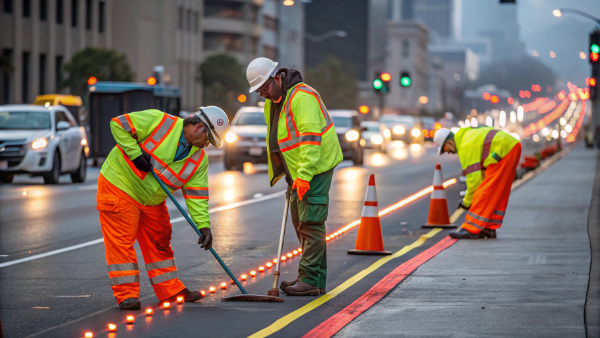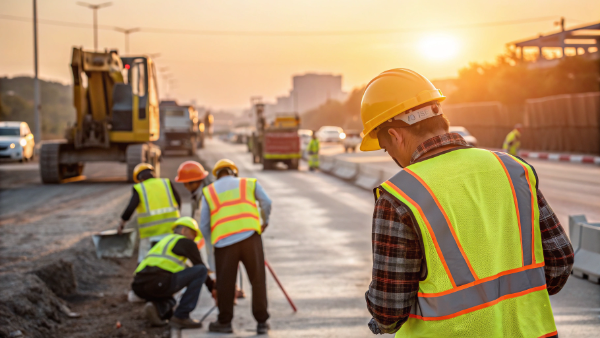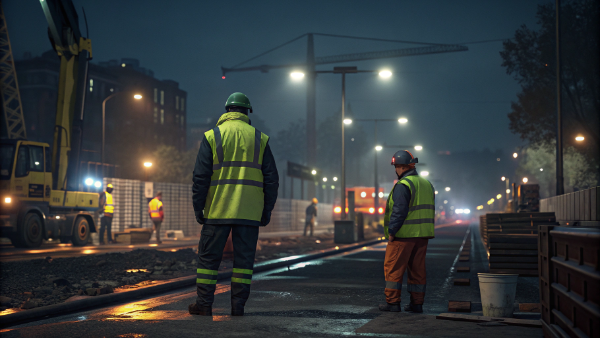Choosing the wrong PPE puts staff at risk. This safety gap can lead to serious accidents. We can help you understand the difference to keep your team safe.
Class 2 PPE provides higher visibility than Class 1. It achieves this with more fluorescent material and reflective tape. Class 2 is for workers near traffic moving over 25 mph, while Class 1 is for environments with slower traffic or greater separation from it.
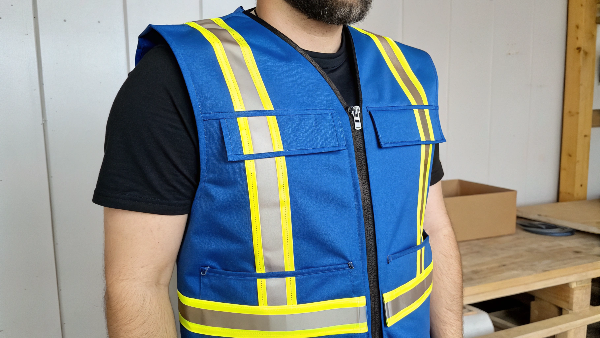
I've been in this business for a long time, since we started Vissafety in 2007. A common point of confusion for our clients is the distinction between different PPE classifications. Getting it right is not just about ticking a compliance box; it's about people's lives. I remember a long-term partner of ours, Danny Cheng, who runs a major PPE import business in California. He always says that clarity on standards is the foundation of his business, preventing costly recalls and, more importantly, protecting his customers' workers. Understanding these details is crucial for anyone responsible for worker safety. Let’s break down these classes and categories so you can make informed decisions.
What is PPE category 2?
Confused by the different PPE categories? This confusion can lead to non-compliance, which puts your workers and your business at risk. Let's define Category 2 PPE clearly.
PPE Category II1 (or 2) covers intermediate risks that are not minimal but also not life-threatening. Equipment in this category, including most high-visibility clothing2, must be tested and certified by an independent notified body to prove it meets specific European technical standards.

When we talk about PPE "Categories," we are usually referring to the European Union's regulatory framework. This system classifies PPE into three groups based on the level of risk the user is exposed to. It's a different system from the ANSI "Classes," but it's important for global compliance. My team and I work with these standards every day in our lab to ensure our products meet global requirements.
Here is a simple breakdown of the three PPE Categories:
The Three PPE Risk Categories
| Category | Risk Level | Description & Examples | Certification Requirement |
|---|---|---|---|
| Category I | Minimal Risk | Protects against minor hazards. Examples include gardening gloves or sunglasses for non-professional use. | Self-certified by the manufacturer. |
| Category II | Intermediate Risk | Protects against risks that are not minimal or fatal. Most hi-vis clothing, safety helmets, and safety footwear fall here. | Must be tested and certified by an independent Notified Body3. |
| Category III | High Risk | Protects against mortal danger or irreversible harm. Examples include fall arrest systems or respiratory protection. | Requires independent certification plus ongoing quality assurance monitoring. |
Most of the high-visibility vests and jackets we manufacture fall under Category II. This means we don't just say they are safe; we have them independently verified to meet standards like EN ISO 204714. This gives our clients like Danny peace of mind, knowing the gear is proven to perform.
What is class 2 PPE?
Do your teams work near moving vehicles? The wrong gear won't keep them visible enough, creating a serious hazard. We'll explain Class 2 PPE to make your choice simple.
Class 2 PPE5 is high-visibility clothing designed for workers who need greater visibility in poor weather or near traffic exceeding 25 mph (40 km/h). Under the ANSI/ISEA 1076 standard, it requires a larger area of fluorescent and reflective material than Class 1.
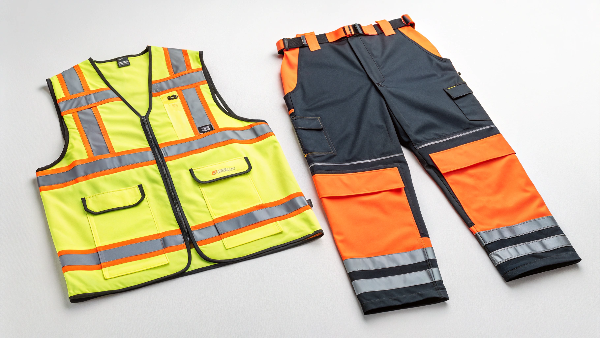
Class 2 is one of the most common levels of high-visibility protection we produce. It hits the balance for a huge number of jobs. Think of roadway construction crews, utility workers, survey crews, and railway workers. They are all exposed to moderate risk from passing traffic. Their work requires them to be seen clearly by drivers, especially in complex backgrounds or bad weather like rain and fog. Class 2 garments are designed to provide 360-degree visibility, ensuring the worker is visible from all sides. Our factory has over 20 production lines dedicated to making sure these garments meet the exact specifications required.
Here's a look at the key requirements for Class 2 under the American standard, ANSI/ISEA 107:
ANSI/ISEA 107 Class 2 Material Requirements
| Material Type | Required Amount (Square Meters) | Required Amount (Square Inches) | Purpose |
|---|---|---|---|
| Background Material | 0.50 m² | 775 in² | Fluorescent material for daytime visibility. |
| Retroreflective Material | 0.13 m² | 201 in² | Reflective tape for nighttime visibility. |
These amounts are significantly higher than for Class 1. This is why Class 2 garments include T-shirts and vests that cover more of the torso, providing a larger visual target for drivers.
What is level 2 PPE?
Do you hear people say "Class 2" or "Level 2" PPE? Using the terms incorrectly can lead to confusion and ordering the wrong gear. I'll clarify what "Level 2" means.
"Level 2 PPE" is often used informally to mean the same thing as "Class 2" high-visibility clothing. The official term in standards like ANSI/ISEA 107 is "Class 2." Both refer to gear for moderate-risk environments with traffic speeds of 25 mph or more.
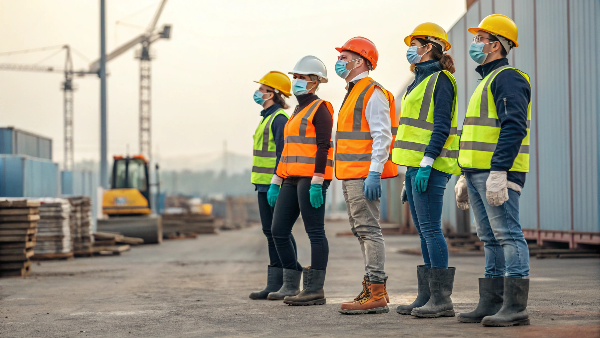
In my 25+ years in the safety apparel industry, I’ve learned that language matters. While our technical team sticks to the official terms, we know our clients hear all sorts of variations in the field. The term "Level" is used in other PPE standards, like for chemical protection suits (e.g., Level A, B, C protection), which can cause confusion. When it comes to high-visibility clothing, the correct term is "Class."
So, if a customer asks for "Level 2" gear, we know they mean ANSI Class 2. It’s our job as a manufacturer to understand their needs and provide the right, certified product.
Here’s how to avoid confusion:
- Always Refer to the Standard: Check if the gear is certified to ANSI/ISEA 107 Class 2 or EN ISO 20471 Class 2. The standard is the ultimate source of truth.
- Focus on the Task: Don't get stuck on the word. Describe the work environment. What are the traffic speeds? What are the lighting conditions? This information will determine the correct Class.
- Trust Your Supplier: A good supplier will ask these questions to ensure you get the right product. We always double-check these requirements with our clients before starting our 30-60 day production cycle.
What is the difference between class 1 and class 2?
Still trying to choose between Class 1 and Class 2? Making the wrong choice can waste money or, worse, compromise worker safety. Let's compare them directly.
The main difference is the amount of high-visibility material required. Class 2 mandates significantly more fluorescent background material and retroreflective tape than Class 1. This makes Class 2 suitable for higher-risk environments where workers must be seen from farther away.
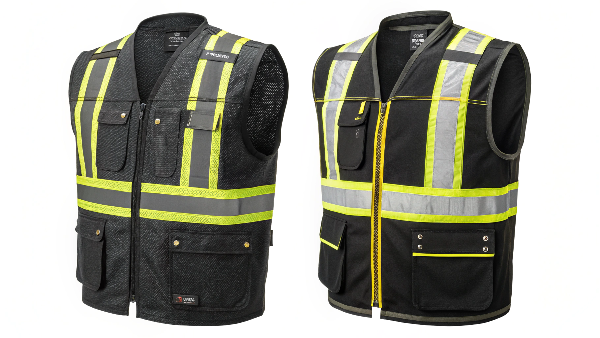
This difference in material directly impacts where each class should be used. It's all about matching the level of protection to the level of risk. My client, Danny, faced this exact challenge. His customers include both warehouse operations and road maintenance crews. He needed a cost-effective solution for both without compromising safety. For his warehouse clients, whose workers are around slow-moving forklifts, Class 1 vests were perfect. For the road crews working next to live traffic, Class 2 jackets were non-negotiable. By choosing the right class for each job, he provided compliant safety gear efficiently.
Here is a side-by-side comparison to make it clear:
Comparison: Class 1 vs. Class 2 Hi-Vis Apparel
| Feature | Class 1 | Class 2 |
|---|---|---|
| Intended User | Workers well separated from traffic or in areas with traffic speeds under 25 mph (40 km/h). | Workers who need greater visibility in environments with traffic speeds over 25 mph (40 km/h). |
| Work Environment | Parking lots, warehouses, delivery drivers, sidewalk maintenance. | Roadway construction, utility work, survey crews, airport ground crews, law enforcement traffic control. |
| Material Amount (ANSI) | Minimum 450 in² fluorescent background; 155 in² reflective tape. | Minimum 775 in² fluorescent background; 201 in² reflective tape. |
| Garment Examples | Basic safety vests, harnesses. | T-shirts, vests that cover the full torso. |
| Primary Goal | Makes the wearer conspicuous to nearby vehicle or equipment operators. | Provides full 360° visibility for workers exposed to traffic from various directions and distances. |
What is type 1 and type 2 protection?
Ever see "Type R" or "Type O" on a safety vest label? Ignoring these "Types" can mean your gear isn't designed for the actual work environment. I will explain them.
In the ANSI/ISEA 107 standard, "Type" defines the intended work environment, not the visibility level. Type R is for Roadway, Type O is for Off-Road, and Type P is for Public Safety. A garment has both a Type and a Class (e.g., Type R, Class 2).
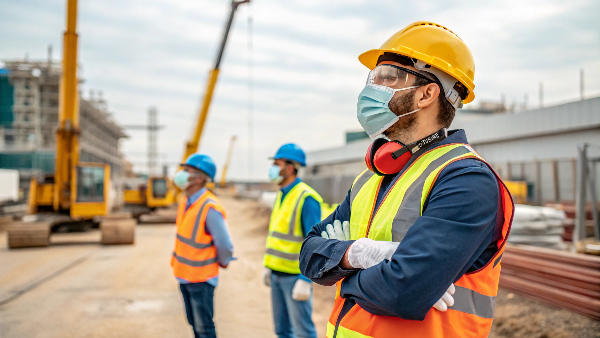
This is a detail that often trips people up. They confuse a garment's "Type" with its "Class." You can think of it like this: "Class" tells you how much visibility you get, while "Type" tells you where you should get it. This system ensures that the design of the garment is appropriate for the specific hazards of a work zone. For example, a Type P (Public Safety) vest might have features like breakaway panels or easy access to equipment on a duty belt, which a Type R (Roadway) vest for a construction worker might not need.
As a manufacturer with a triple-inspection quality process, we pay close attention to these details. We build garments to the exact specifications for each Type and Class.
ANSI/ISEA 107 Garment Types Explained
| Garment Type | Full Name | Intended Use Environment | Available Classes |
|---|---|---|---|
| Type O | Off-Road | For workers not exposed to public roadway traffic, like in warehouses or oil & gas extraction sites. | Class 1 |
| Type R | Roadway | For workers exposed to traffic from public roadways, like highway crews and utility workers. | Class 2, Class 3 |
| Type P | Public Safety | For emergency and incident responders like police and firefighters. Provides added features for access to equipment. | Class 2, Class 3 |
Understanding both the Type and Class ensures you select PPE that is not only visible enough but also functional for the specific job.
What are the different levels of PPE?
With so many levels and classes, it is easy to get lost and make a mistake. Let's create a simple overview of the different high-visibility PPE levels for you.
High-visibility PPE is generally broken down into three main levels or classes. Class 1 is for low-risk work zones. Class 2 is for moderate-risk areas with traffic. Class 3 provides the maximum level of visibility for high-risk, high-speed, and complex environments.

The three classes of high-visibility clothing recognized by the ANSI/ISEA 107 standard create a clear ladder of protection. Each step up the ladder adds more high-visibility material to the garment, making the wearer stand out more in their environment. Our job is to manufacture garments for all three classes, ensuring we can provide the right solution for any level of risk our clients face. We even work with innovative materials, like cooling fabrics, to make sure higher-class garments remain comfortable to wear in hot climates.
Here's a quick summary of all three classes:
The 3 Classes of High-Visibility Safety Apparel
-
Class 1 PPE
This class is for workers in low-risk environments where they are well separated from traffic that is moving slower than 25 mph. It ensures they are visible to machine operators on a worksite but does not provide enough visibility for roadway work.
- Example Users: Parking attendants, warehouse workers, shopping cart retrievers.
-
Class 2 PPE
This is for workers who are closer to traffic moving over 25 mph. The garments provide 360-degree visibility and are a necessary step up in protection for anyone working near active roadways.
- Example Users: Roadway construction workers, utility crews, airport ground workers.
-
Class 3 PPE
This class offers the highest level of visibility. It is required for workers in dangerous, high-speed traffic environments or conditions with extremely low visibility. These garments have sleeves and additional reflective material on the arms and legs.
- Example Users: Highway flaggers, emergency responders, accident site investigators.
What's better, class 1 or 2?
You want the absolute best PPE for your team. But is more visibility always better? Choosing the wrong class can be inefficient. Let's help you decide what's truly best.
"Better" depends entirely on the job's risk assessment. Class 2 is better for visibility in moderate-risk areas. However, for low-risk jobs, Class 1 is sufficient, often more comfortable, and more cost-effective. The best choice is the one that correctly matches the hazard.

This is a conversation I have often. A client's first instinct is sometimes to order the highest class for everyone, thinking it's the safest option. While admirable, it isn't always the most practical solution. Using Class 2 PPE in a low-risk warehouse job (where Class 1 is sufficient) means you're spending more than you need to. More importantly from the worker's perspective, a lighter Class 1 vest can be more comfortable than a bulkier Class 2 T-shirt or vest, especially in a hot warehouse.
The key is a proper risk assessment. We help our clients think through this:
- Identify the hazards: What is the speed of nearby traffic or machinery?
- Assess the environment: Is the work happening at night? In bad weather? Against a complex background?
- Match the Class to the Risk: Select the Class that meets the minimum safety requirements for those specific conditions.
Under-protecting is dangerous and non-compliant. Over-protecting can be wasteful and less comfortable for the wearer. The "best" choice is the right choice. It's about being smart and efficient with your safety program.
Conclusion
Choosing between Class 1 and Class 2 PPE is simple when you focus on one thing: risk. Match the garment's visibility level to the work environment to keep your team safe and compliant.
-
Understanding PPE Category II is crucial for compliance and safety in the workplace, ensuring proper protection against intermediate risks. ↩
-
High-visibility clothing is essential for worker safety, especially in environments with low visibility, making it a must-read for safety managers. ↩
-
Exploring the role of an independent Notified Body can clarify how safety standards are upheld, ensuring compliance and worker safety. ↩
-
Learning about the EN ISO 20471 standard helps understand the requirements for high-visibility clothing, ensuring optimal safety for workers. ↩
-
Understanding Class 2 PPE is crucial for ensuring safety in high-risk environments. Explore this link to learn more about its specifications and benefits. ↩
-
The ANSI/ISEA 107 standards are vital for compliance and safety. Discover detailed insights on these standards to enhance workplace safety. ↩

